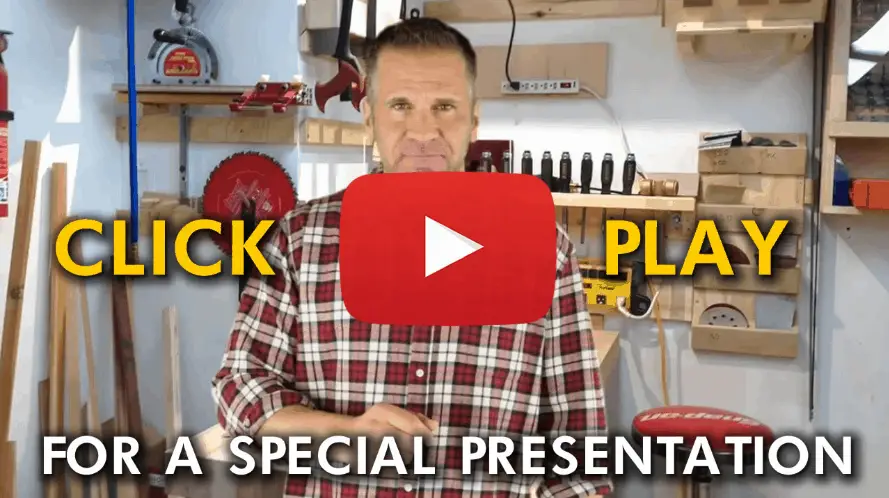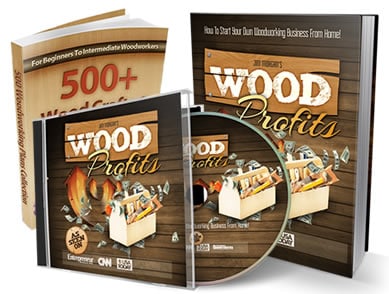Subscribe to jimmydiresta on YouTube
Many beginners make common mistakes when using a bandsaw, which can lead to issues such as drifting, burning, and smoking. To help prevent these issues, it is important to use the proper blade and maintain it regularly. Stamped blades are not recommended for cutting wood, and dull blades should be thrown away.
Another common mistake is attempting to cut round objects without properly fixing them to the table. Fixturing the object with a clamp or hot glue can help prevent it from spinning and causing potential accidents. Similarly, when cutting square objects, it is important to avoid high siding and ensure that the bottom of the cut has the leverage or support needed to prevent the blade from bending or breaking.
Key Takeaways
- Proper blade selection and maintenance is crucial for avoiding common bandsaw mistakes.
- Fixturing round objects and avoiding high siding when cutting square objects can help prevent accidents.
- Insert plates are important for safety and can be easily made with a piece of scrap material.
Common Bandsaw Mistakes
Beginners often make mistakes when using a bandsaw. In this section, we will discuss some of the most common mistakes and how to avoid them.
Blade Maintenance
One of the biggest mistakes beginners make is not changing the blade regularly. Reusing old blades can cause the saw to drift, cut poorly, smoke, or even burn. It is important to change blades when they become dull. A stamped blade is not recommended for woodcutting as they tend to go dull quickly and start drifting.
Cutting Round Objects
Cutting round objects on a bandsaw can be tricky, especially for beginners. Fixturing the object is crucial to prevent it from spinning and causing injury. Clamping or screwing the object to a cradle or table is recommended.
High Siding
Another common mistake beginners make is high siding. This occurs when the saw blade pulls the material down onto the table. To avoid this, flip the material over and cut from the other side to gain leverage. If high siding is necessary, make a temporary cut to raise the blade support and provide extra support for the material.
Zero Clearance Plate
A zero clearance plate is important for making small cuts and preventing debris from getting stuck in the insert plate. If the saw’s insert plate is missing or damaged, replace it with a piece of material such as acrylic or plywood.
Guide Block Adjustment
Guide block adjustment is essential to ensure the teeth are sticking out past the guide block and the bearing is spinning on both the top and bottom. The crown at the top of the blade should be in the middle or just past the crown when backing out of a cut.
By avoiding these common mistakes, beginners can improve their bandsaw skills and achieve better results.
Want To Improve Your Woodworking?
Discover 1,000 Hours Of Step-By-Step Woodworking Videos

It’s called Woodwork101. A database of detailed videos and blueprints in crystal clear, mouth-watering HD that will take you by the hand and show you that DIY home projects done the right way are easy, fun, and always of top quality… turning dream into reality in a heart-beat. Getting you that perfect build each and every time.
Blade Selection and Maintenance
When beginning their bandsaw journey, there are several mistakes that people tend to make. One of the biggest mistakes is not changing the blade often enough. Old blades can cause the saw to drift, not cut well, smoke, or even burn. It is important to change dull blades and not to use stamped blades, as they tend to go dull quickly and are not suitable for cutting wood.
Suffolk Machinery, now known as Timber Wolf, produces high-quality blades that are recommended for cutting wood. Timber Wolf blades are available in quarter inch and eighth inch sizes, with 14 teeth per inch being the most common. For cutting materials such as MDF, brass, and aluminum, a 3/8 inch blade with 14 teeth per inch is recommended.
Another common mistake is cutting round objects on the bandsaw without properly fixing them in place. Round objects such as baseballs, hockey pucks, or pipes should be clamped or fixed to a cradle to prevent them from spinning and causing injury. Similarly, when cutting the corners off of square objects, it is important to avoid high siding, which can cause the blade to bend or break.
Blade maintenance is also crucial for optimal performance. Bandsaw manufacturers often provide plastic inserts that are not suitable for woodworking. It is recommended to replace these inserts with a zero clearance plate made of brass or acrylic. Guide blocks should be checked to ensure that the teeth are sticking out past the guide block and that the bearing is spinning on the bottom and top. The crown of the blade should be in the middle or just past the crown when backing out of a cut.
By avoiding these common mistakes and properly maintaining the blade and saw, woodworkers can achieve accurate and safe cuts on the bandsaw.
Handling Round Objects
When cutting round objects on a bandsaw, it is common for beginners to make mistakes that can be dangerous. To avoid this, it is important to fixture the object to prevent it from spinning out of control. A clamp, hot glue, or screws can be used to secure the object to a stable surface.
Attempting to cut a natural shape like a tree branch without proper fixation can also be dangerous. It is recommended to always fixture something round, such as a ball, rod, or pipe. If the object is not properly secured, it can easily get sucked out of the user’s hands and cause injury.
To cut a round object on a bandsaw, it is important to ensure that the clamp is flat against the table to prevent any rocking. This will provide stability and prevent the object from spinning out of control.
Overall, proper fixation and caution are necessary when cutting round objects on a bandsaw to prevent injury and ensure accurate cuts.
Cutting Square Objects
When cutting the corners off of a square object, one common mistake is to approach it from the high side, which can cause the object to be pulled down onto the table and potentially damage the wood or bend the blade. The safer choice is to flip the object over and cut it from the bottom, using the leverage of the material or the support of something underneath to prevent it from pulling down.
If a high side cut is necessary, a safe way to do it is to temporarily raise the blade support with a piece of scrap to provide support for the object. Another important consideration when using a bandsaw is to always fixture round objects, such as balls or pipes, before cutting them to prevent them from spinning out of control and causing injury.
It is also important to use the correct blade for the job and to change blades regularly. Using a dull blade can cause the saw to drift, burn, or smoke, and using a stamped blade can be dangerous and lead to poor cutting results. jimmydiresta recommends using Timberwolf blades, which he has been using for 35 years and finds to be the best for cutting wood, MDF, brass, and aluminum.
In addition, he emphasizes the importance of using a zero clearance plate to prevent debris from getting stuck in the insert plate and causing the blade to pull the material into it. When setting guide blocks, he recommends ensuring that the teeth are sticking out past the guide block and that the bearing is spinning on the bottom and top. Finally, he advises always making sure that the crown at the top of the blade is in the middle or just past the crown when backing out of a cut.
[Video] 3 Most Common Mistakes
When Setting Up Shop

A woodworking friend of mine shared this video by Ralph Chapman with me that helped him set up his workshop.
The video explains the benefits of Ralph Chapman’s guide about setting up an affordable workshop and avoiding the most common mistakes offers to anyone interested in woodworking.
Proper Use of Guide Blocks
Guide blocks are an important part of a bandsaw and their proper use can greatly affect the quality of the cut. The teeth of the blade should be sticking out just past the guide blocks and the bearing should be spinning on the bottom and top. It is important to make sure that the crown at the top of the blade is right in the middle or just past the crown when backing out of a cut.
It is recommended to use Timberwolf blades as they are the best blades for cutting wood. When cutting round objects, it is important to fixture them down to the table with a clamp, hot glue, or screws to prevent them from spinning and causing injury. When cutting the corners off of something square, it is important to avoid high siding and to make sure that the bottom of the cut has either the leverage of the material or the support of something underneath.
It is also important to have a zero clearance plate to prevent any debris from getting stuck in the guide blocks. If the plate is missing or damaged, a piece of material can be placed over it for safety. The guide blocks on the bandsaw should be set up so that the teeth are sticking out past the guide blocks and the bearing is spinning on the bottom and top.
Dealing with High Side Cuts
When cutting the corners off of something square, it is important to avoid high siding. High siding occurs when the high side of the cut pulls down onto the table, causing the blade to bend and potentially break the piece of wood. To prevent high siding, the safer choice is to flip the piece over and cut it from the other side, using the leverage of the material to keep it from pulling down.
If a high side cut is necessary, it is important to support it properly. One way to do this is to raise the blade support using a piece of scrap material, which will provide temporary support for the cut. Another option is to adjust the table to better support the cut.
It is also important to use a zero clearance plate to prevent debris from getting stuck in the insert plate and potentially causing injury. A piece of acrylic with double-sided tape can be used to create a zero clearance plate for making small cuts. If the insert plate is missing or damaged, a full piece of clean cut plywood can be used to cover it for safety purposes.
When cutting round objects on a bandsaw, it is crucial to fixture them properly to prevent them from spinning out of control. Round objects such as baseballs or pipes should be clamped or screwed to a fixture to keep them in place during cutting.
Overall, to avoid common mistakes when using a bandsaw, it is important to use high-quality blades, fixture round objects properly, and avoid high siding when cutting corners. Proper support and zero clearance plates can also help ensure safety and accuracy when using a bandsaw.
Importance of Insert Plates
One important aspect of using a bandsaw that is often overlooked is the insert plate. The insert plate is a small piece of material that sits in the table of the bandsaw and surrounds the blade. It is important to have a good insert plate because it can greatly affect the safety and accuracy of the saw.
Many bandsaw manufacturers provide a plastic insert plate with their saws, but these are often inadequate and can be dangerous. Debris from the cut can get stuck in the holes of the insert plate, causing the blade to become unstable and potentially dangerous. In addition, the plastic insert plate can wear down over time, causing the blade to become misaligned and resulting in inaccurate cuts.
To avoid these issues, it is recommended to replace the plastic insert plate with a better quality material, such as brass or acrylic. These materials provide a more stable surface for the blade to cut against and can be easily replaced when they become worn or damaged.
In addition to providing a stable surface for the blade, the insert plate can also be used to create a zero clearance plate. This is important for making small, accurate cuts, as it helps to prevent the blade from wandering and producing inaccurate cuts.
Overall, the insert plate is an important component of the bandsaw that should not be overlooked. By using a high-quality insert plate and taking care to maintain it properly, users can ensure that their saw is safe and produces accurate cuts.
[Guide] How To Launch Your Woodworking Business For Under $1000
Click Here To View
If you’re considering turning your woodworking hobby into a part-time business check out this helpful guide on how to get started.
Setting Up the Bandsaw
One of the biggest mistakes beginners make when starting their bandsaw journey is not changing the blade regularly. When blades get dull, they need to be thrown away. Stamped blades are not recommended for cutting wood as they tend to go dull quickly, and they may start drifting. Timberwolf blades are the best blades recommended for cutting wood, and they are available in quarter-inch and eighth-inch sizes.
When cutting round objects on a bandsaw, it is important to fixture them down securely. Fixturing can be done by clamping, hot gluing, or screwing the object to a stable surface. The same applies to natural shapes such as tree branches. Always fixture them down to the table to avoid accidents.
When cutting the corners off of a square object, beginners often make the mistake of high siding. High siding is when the high side of the object pulls down onto the table, which can bend the blade and break the piece of wood. The safer choice is to flip over the object and cut it from the bottom to avoid high siding. In the case of high siding, a temporary cut can be made to support the high side cut.
It is important to have a zero clearance plate to avoid debris from getting stuck in the guide block. A piece of material can be placed over the insert plate, and a zero clearance plate can be made by sawing a piece of acrylic and placing double-sided tape on it.
Guide blocks should be set up with the teeth sticking out past the guide block, and the bearing should be spinning on the bottom and top. The crown at the top of the blade should be in the middle or just past the crown when backing out of a cut.


